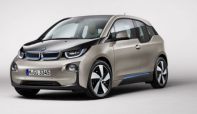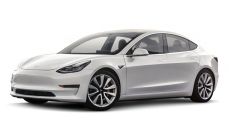


Nissan LEAF plug and socket :
- CHAdeMO : DC fast charge (left)
- type 1 standard charge AC 230V (right)



Contact :
Jean-Charles PAPAZIAN
06 86 47 72 52
Cord mode 2: practical and reassuring, but involves fees of 12 hours and a risk to security.
Solutions côté borne de charge
en France

Schneider Parking terminal
mode 3 (AC) 3 to 22 kVA

Fast Charge Schneider terminal
mode 3 (AC) 43 kVA
mode 4 (DC) 50 kVA
Nissan LEAF plug and socket :
- CHAdeMO : DC fast charge (left)
- type 1 standard charge AC 230V (right)
The charging mode scheme in France is the mode 3 charge using type 3 connector from 3.6kVA (normal load) up to 22 kVA (accelerated charge). This mode implies the setting a wallbox by a professional but at the same time ensures a safe installation and charge performance (maximum 7 hours). For example, all Autolib (car sharing in Paris) terminals have a type 3 socket.
Unlike Type 2 connector (terminal side retained in Germany), type 3 ensures compliance with NFC 15-100 standard (installations below 1000V AC in France).
For fast charging, there are two possible solutions:
- 43 kVA load mode 3 (AC tri 400V / 63A). advantages:
1. No charger on terminal side. Significant cost reductions and reliability. This is the solution adopted by Renault starting from ZOE.
2. Only one connector on vehicle side (type 2 / 63A for ZOE).
- 50 kVA load mode 4 (DC 400V/125A).
Advantage: simplicity and speed up.
disadvantages:
1. Cost and reliability for terminal integrates the loader.
2. Cost for two vehicle connectors are needed.
The current standard is the Chademo, but challenged by making combo.
The slow charge mode 2 (+ protective case load jack "type E" standard). is limited to exceptional refills. The constructors have limited the current to 8A, so the load exceeds the full 12 hours! ... More security upstream of the case is not assured because depending on the safety of the installation, therefore potentially dangerous. Some manufacturers require a discharge document from the customes rengarding the security.
This cord so called "courtesy" is reassuring while awaiting a massive deployment of charging stations.




Charging infrastructure




Réalisations